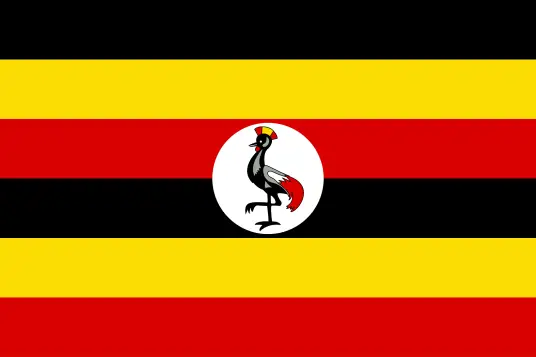
-
 Español
Español
-
 Portugues
Portugues
-
 Pусский
Pусский
-
 Français
Français
-
 Deutsch
Deutsch
-
 日本語
日本語
-
 한국어
한국어
-
 العربية
العربية
-
 Italiano
Italiano
-
 Nederlands
Nederlands
-
 Ελληνικά
Ελληνικά
-
 Svenska
Svenska
-
 Polski
Polski
-
 ไทย
ไทย
-
 Türk dili
Türk dili
-
 हिन्दी
हिन्दी
-
 Indonesia
Indonesia
-
 Melayu
Melayu
-
 Tiếng Việt
Tiếng Việt
-
 中文
中文
-
 dansk
dansk
-
 Magyar
Magyar
-
 қазақ
қазақ
-
 বাংলা
বাংলা
-
 עִברִית
עִברִית
-
 čeština
čeština
-
 Soomaali
Soomaali
-
 မြန်မာ
မြန်မာ
-
 فارسی
فارسی
-
 українська
українська
-
 norsk
norsk
-
 Gaeilge
Gaeilge
-
 беларускі
беларускі
-
 Română
Română
-
 ພາສາລາວ
ພາສາລາວ
-
 Filipino
Filipino
-
 lietuvių
lietuvių
-
 Cymraeg
Cymraeg
-
 македонски
македонски
-
 Suomalainen
Suomalainen
-
 slovenský
slovenský
-
 o'zbek
o'zbek
-
 اردو
اردو
-
 հայերեն
հայերեն
-
 Igbo
Igbo
-
 български
български
-
 سنڌي
سنڌي
-
 Shona
Shona
-
 සිංහල
සිංහල
-
 Hrvatski
Hrvatski
-
 íslenskur
íslenskur
-
 galego
galego
-
 català
català
-
 Zulu South Africa
Zulu South Africa
-
 Afrikaans isiXhosa
Afrikaans isiXhosa
-
 ಕನ್ನಡ
ಕನ್ನಡ
-
 lëtzebuergesch
lëtzebuergesch
-
 Indonésia Sunda
Indonésia Sunda
-
 basa jawa
basa jawa
-
 ગુજરાતી
ગુજરાતી
-
 Кыргызча
Кыргызча
-
 тоҷикӣ
тоҷикӣ
-
 Србија
Србија
-
 Twi
Twi
-
 Hawaii
Hawaii
-
 Cebu
Cebu
-
 नेपाल
नेपाल
-
 euskara
euskara
-
 Kurdî
Kurdî
-
 frissi
frissi
-
 יידיש
יידיש
-
 latvija
latvija
-
 slovenija
slovenija
-
 kiswahili
kiswahili
-
 ਪੰਜਾਬ
ਪੰਜਾਬ
-
 پښتو
پښتو
-
 საქართველოს
საქართველოს
-
 hua moni
hua moni
-
 bosna
bosna
-
 తెలుగు
తెలుగు
-
 தமிழ்
தமிழ்
-
 Kreyòl ayisyen
Kreyòl ayisyen
-
 Eesti
Eesti
-
 Corsica
Corsica
-
 Yoruba
Yoruba
-
 Gàidhlig na h-Alba
Gàidhlig na h-Alba
-
 Samoa
Samoa
-
 Монгол
Монгол
-
 Hausa
Hausa
-
 Azərbaycan
Azərbaycan
-
 አማራ
አማራ
-
 Shqipëria
Shqipëria
-
 Malagasy
Malagasy
-
 मराठी
मराठी
-
 മലയാളം
മലയാളം
-
 Malta
Malta
-
 ខ្មែរ
ខ្មែរ
-
 Chicheva
Chicheva
-
 中文(繁体)
中文(繁体)
-
 ଓଡିଆ
ଓଡିଆ
-
 Setswana
Setswana
-
 Afrikaans
Afrikaans
-
 Aymara
Aymara
-
 Башҡорт
Башҡорт
-
 Türkmenler
Türkmenler
-
 ትግሪኛ
ትግሪኛ
-
 Afaan Oromoo
Afaan Oromoo
-
 অসমীয়া
অসমীয়া
-
 Kinyarwanda
Kinyarwanda
-
 Ilocano
Ilocano
-
 Wolof
Wolof
-
 अवधी
अवधी
-
 Oluganda
Oluganda
-
 Bikol
Bikol
-
 Fulɓe
Fulɓe
-
 Kikongo
Kikongo
-
 Sango
Sango
-
 ދިވެހި
ދިވެހި
-
 Lingala
Lingala
-
 मैथिली
मैथिली
-
 Tsonga
Tsonga
-
 ꯃꯦꯏ ꯊꯥꯏ꯫
ꯃꯦꯏ ꯊꯥꯏ꯫
-
 brezhoneg
brezhoneg
-
 Furlan
Furlan
-
 नेवा
नेवा
-
 རྫོང་ཁ
རྫོང་ཁ
-
 Santali
Santali
-
 Аҧсуа
Аҧсуа
-
 Нохчийн
Нохчийн
-
 Чӑваш
Чӑваш
-
 Татар
Татар
-
 Batak Karo
Batak Karo
-
 دری
دری
-
 Diura
Diura
-
 Fengyu
Fengyu
-
 Eʋegbe
Eʋegbe
-
 Iban
Iban
-
 Fiji
Fiji
-
 Tonga
Tonga
-
 Inuktitut
Inuktitut
-
 Nahuatl
Nahuatl
-
 maaya yucatec
maaya yucatec
-
 Runasimi
Runasimi
-
 guarani
guarani
-
 Qafar
Qafar
-
 Acholi
Acholi
-
 Dinka
Dinka
-
 Luo
Luo
-
 Lundi
Lundi
-
 isiNdebele
isiNdebele
-
 Tshivenḓa
Tshivenḓa
-
 Sesotho sa Leboa
Sesotho sa Leboa
-
 Sesotho sa Borwa
Sesotho sa Borwa
-
 Ndumbe
Ndumbe
-
 Papuan Pidgin
Papuan Pidgin
-
 Rromani ćhib
Rromani ćhib
-
 Thok Nath
Thok Nath
yuxiatugong@163.com
+86 18353494641
-
 Español
Español
-
 Portugues
Portugues
-
 Pусский
Pусский
-
 Français
Français
-
 Deutsch
Deutsch
-
 日本語
日本語
-
 한국어
한국어
-
 العربية
العربية
-
 Italiano
Italiano
-
 Nederlands
Nederlands
-
 Ελληνικά
Ελληνικά
-
 Svenska
Svenska
-
 Polski
Polski
-
 ไทย
ไทย
-
 Türk dili
Türk dili
-
 हिन्दी
हिन्दी
-
 Indonesia
Indonesia
-
 Melayu
Melayu
-
 Tiếng Việt
Tiếng Việt
-
 中文
中文
-
 dansk
dansk
-
 Magyar
Magyar
-
 қазақ
қазақ
-
 বাংলা
বাংলা
-
 עִברִית
עִברִית
-
 čeština
čeština
-
 Soomaali
Soomaali
-
 မြန်မာ
မြန်မာ
-
 فارسی
فارسی
-
 українська
українська
-
 norsk
norsk
-
 Gaeilge
Gaeilge
-
 беларускі
беларускі
-
 Română
Română
-
 ພາສາລາວ
ພາສາລາວ
-
 Filipino
Filipino
-
 lietuvių
lietuvių
-
 Cymraeg
Cymraeg
-
 македонски
македонски
-
 Suomalainen
Suomalainen
-
 slovenský
slovenský
-
 o'zbek
o'zbek
-
 اردو
اردو
-
 հայերեն
հայերեն
-
 Igbo
Igbo
-
 български
български
-
 سنڌي
سنڌي
-
 Shona
Shona
-
 සිංහල
සිංහල
-
 Hrvatski
Hrvatski
-
 íslenskur
íslenskur
-
 galego
galego
-
 català
català
-
 Zulu South Africa
Zulu South Africa
-
 Afrikaans isiXhosa
Afrikaans isiXhosa
-
 ಕನ್ನಡ
ಕನ್ನಡ
-
 lëtzebuergesch
lëtzebuergesch
-
 Indonésia Sunda
Indonésia Sunda
-
 basa jawa
basa jawa
-
 ગુજરાતી
ગુજરાતી
-
 Кыргызча
Кыргызча
-
 тоҷикӣ
тоҷикӣ
-
 Србија
Србија
-
 Twi
Twi
-
 Hawaii
Hawaii
-
 Cebu
Cebu
-
 नेपाल
नेपाल
-
 euskara
euskara
-
 Kurdî
Kurdî
-
 frissi
frissi
-
 יידיש
יידיש
-
 latvija
latvija
-
 slovenija
slovenija
-
 kiswahili
kiswahili
-
 ਪੰਜਾਬ
ਪੰਜਾਬ
-
 پښتو
پښتو
-
 საქართველოს
საქართველოს
-
 hua moni
hua moni
-
 bosna
bosna
-
 తెలుగు
తెలుగు
-
 தமிழ்
தமிழ்
-
 Kreyòl ayisyen
Kreyòl ayisyen
-
 Eesti
Eesti
-
 Corsica
Corsica
-
 Yoruba
Yoruba
-
 Gàidhlig na h-Alba
Gàidhlig na h-Alba
-
 Samoa
Samoa
-
 Монгол
Монгол
-
 Hausa
Hausa
-
 Azərbaycan
Azərbaycan
-
 አማራ
አማራ
-
 Shqipëria
Shqipëria
-
 Malagasy
Malagasy
-
 मराठी
मराठी
-
 മലയാളം
മലയാളം
-
 Malta
Malta
-
 ខ្មែរ
ខ្មែរ
-
 Chicheva
Chicheva
-
 中文(繁体)
中文(繁体)
-
 ଓଡିଆ
ଓଡିଆ
-
 Setswana
Setswana
-
 Afrikaans
Afrikaans
-
 Aymara
Aymara
-
 Башҡорт
Башҡорт
-
 Türkmenler
Türkmenler
-
 ትግሪኛ
ትግሪኛ
-
 Afaan Oromoo
Afaan Oromoo
-
 অসমীয়া
অসমীয়া
-
 Kinyarwanda
Kinyarwanda
-
 Ilocano
Ilocano
-
 Wolof
Wolof
-
 अवधी
अवधी
-
 Oluganda
Oluganda
-
 Bikol
Bikol
-
 Fulɓe
Fulɓe
-
 Kikongo
Kikongo
-
 Sango
Sango
-
 ދިވެހި
ދިވެހި
-
 Lingala
Lingala
-
 मैथिली
मैथिली
-
 Tsonga
Tsonga
-
 ꯃꯦꯏ ꯊꯥꯏ꯫
ꯃꯦꯏ ꯊꯥꯏ꯫
-
 brezhoneg
brezhoneg
-
 Furlan
Furlan
-
 नेवा
नेवा
-
 རྫོང་ཁ
རྫོང་ཁ
-
 Santali
Santali
-
 Аҧсуа
Аҧсуа
-
 Нохчийн
Нохчийн
-
 Чӑваш
Чӑваш
-
 Татар
Татар
-
 Batak Karo
Batak Karo
-
 دری
دری
-
 Diura
Diura
-
 Fengyu
Fengyu
-
 Eʋegbe
Eʋegbe
-
 Iban
Iban
-
 Fiji
Fiji
-
 Tonga
Tonga
-
 Inuktitut
Inuktitut
-
 Nahuatl
Nahuatl
-
 maaya yucatec
maaya yucatec
-
 Runasimi
Runasimi
-
 guarani
guarani
-
 Qafar
Qafar
-
 Acholi
Acholi
-
 Dinka
Dinka
-
 Luo
Luo
-
 Lundi
Lundi
-
 isiNdebele
isiNdebele
-
 Tshivenḓa
Tshivenḓa
-
 Sesotho sa Leboa
Sesotho sa Leboa
-
 Sesotho sa Borwa
Sesotho sa Borwa
-
 Ndumbe
Ndumbe
-
 Papuan Pidgin
Papuan Pidgin
-
 Rromani ćhib
Rromani ćhib
-
 Thok Nath
Thok Nath

News Center
News Center
HOT PRODUCT
Irrigation Composite Geomembrane for Canal Rehabilitation
2025-10-14 08:01:22

Irrigation Composite Geomembrane for Canal Rehabilitation
1. Introduction
Canal systems play a crucial role in agricultural irrigation, water supply, and drainage. However, over time, canals degrade due to factors such as seepage, erosion, chemical degradation, and biological activity. These issues lead to significant water loss, reduced efficiency, and increased maintenance costs. To address these challenges, composite geomembranes have emerged as an effective solution for canal rehabilitation.
A composite geomembrane is a multi-layered material that combines the impermeability of geomembranes with the mechanical strength of geotextiles. This combination enhances durability, reduces seepage, and extends the lifespan of canals. This paper explores the properties, benefits, installation methods, and case studies of composite geomembranes in canal rehabilitation.
---
2. Understanding Composite Geomembranes
2.1 Composition and Structure
Composite geomembranes typically consist of:
- Geomembrane Layer (HDPE, LDPE, PVC, or EPDM): Provides impermeability to prevent water seepage.
- Geotextile Layer (Non-woven or Woven): Enhances puncture resistance, distributes loads, and improves stability.
- Adhesive or Bonding Layer: Ensures strong bonding between the geomembrane and geotextile.
2.2 Key Properties
- High Impermeability: Prevents water leakage, improving irrigation efficiency.
- UV Resistance: Withstands prolonged exposure to sunlight.
- Chemical Resistance: Resists degradation from fertilizers, salts, and other chemicals.
- Flexibility and Durability: Adapts to canal deformations and resists mechanical damage.
- Ease of Installation: Can be prefabricated or installed on-site.
---
3. Benefits of Composite Geomembranes in Canal Rehabilitation
3.1 Seepage Control
One of the primary causes of water loss in canals is seepage. Composite geomembranes act as a barrier, reducing seepage by up to 90-95%, ensuring efficient water delivery.
3.2 Erosion Prevention
The geotextile layer stabilizes the canal bed and slopes, preventing soil erosion caused by water flow and external forces.
3.3 Cost-Effectiveness
While initial installation costs may be higher than traditional methods, composite geomembranes reduce long-term maintenance expenses by minimizing repairs and water loss.
3.4 Extended Lifespan
With a service life of 20-50 years, composite geomembranes outperform conventional lining materials like concrete or clay.
3.5 Environmental Benefits
- Reduces water wastage, supporting sustainable irrigation.
- Minimizes soil contamination from agrochemicals by preventing leaching.
---
4. Installation Techniques
4.1 Site Preparation
- Cleaning and Grading: Remove debris, level the canal bed, and compact the subgrade.
- Subgrade Treatment: Ensure a smooth, stable surface to prevent punctures.
4.2 Geomembrane Deployment
- Roll Deployment: Unroll the composite geomembrane along the canal, ensuring proper overlap (minimum 30 cm).
- Welding/Seaming: Use thermal or chemical welding to join sheets securely.
- Anchoring: Secure edges with trench anchors or concrete collars.
4.3 Protection Layer
- A layer of soil or sand may be added to protect the geomembrane from UV exposure and mechanical damage.
4.4 Quality Control
- Conduct leak detection tests (e.g., spark testing, vacuum testing).
- Inspect seams and overlaps for integrity.
---
5. Case Studies and Applications
5.1 Case Study 1: Arid Region Canal Rehabilitation
In a water-scarce region, a canal system experienced 30% water loss due to seepage. After installing a HDPE composite geomembrane, seepage was reduced to less than 5%, improving irrigation efficiency and crop yields.
5.2 Case Study 2: Saline Soil Canal Lining
A canal in a saline environment suffered from chemical degradation of concrete linings. A PVC composite geomembrane was installed, providing chemical resistance and preventing salt-induced deterioration.
5.3 Case Study 3: High-Velocity Flow Canal
A canal with high water velocity faced erosion issues. A woven geotextile-reinforced geomembrane was used, enhancing puncture resistance and stabilizing the canal bed.
---
6. Challenges and Solutions
6.1 Installation Challenges
- Uneven Subgrade: Can cause wrinkles or punctures.
Solution: Proper compaction and smoothing before installation.
- Seam Failures: Poor welding leads to leaks.
Solution: Use certified welders and conduct quality tests.
6.2 Long-Term Durability
- UV Degradation: Prolonged exposure weakens the geomembrane.
Solution: Use UV-stabilized materials or cover with a protective layer.
- Biological Growth: Algae or roots may penetrate.
Solution: Use anti-root or antimicrobial geomembranes.
---
7. Future Trends in Canal Rehabilitation
7.1 Smart Geomembranes
- Integration with sensors to monitor seepage and structural integrity.
- Self-healing materials that repair minor punctures automatically.
7.2 Sustainable Materials
- Development of biodegradable geomembranes with minimal environmental impact.
- Use of recycled polymers to enhance sustainability.
7.3 Advanced Installation Techniques
- Robotic welding for precise seam quality.
- Prefabricated canal liners for faster deployment.
---
8. Conclusion
Composite geomembranes offer a highly effective, durable, and cost-efficient solution for canal rehabilitation. By minimizing seepage, preventing erosion, and extending canal lifespan, they contribute to sustainable water management in agriculture and irrigation.
With advancements in material science and installation techniques, composite geomembranes will continue to play a vital role in modernizing canal infrastructure worldwide. Proper selection, installation, and maintenance are key to maximizing their benefits and ensuring long-term performance.
---
This comprehensive discussion highlights the importance of composite geomembranes in canal rehabilitation, providing insights into their advantages, applications, and future potential.








 Phone
Phone
Comment
(0)